Do you have a question about the Emerson VERTIV Liebert Mini-Mate2 MM2CF and is the answer not in the manual?
Details the components and codes used in Liebert unit model numbers for various systems.
Highlights critical safety information regarding electrical hazards, pressure, moving parts, and hot surfaces.
Provides notices on water leaks, freezing/corrosion risks, and proper handling during installation and service.
Introduces the Liebert Mini-Mate2 system, its design, ease of use, efficiency, and reliability.
Discusses factors for choosing an installation location to prevent damage and ensure proper operation.
Details features of self-contained and split systems, including air-cooled and water/glycol-cooled units.
Explains the microprocessor control system, wall-mounted interface, and other standard control functions.
Describes various optional features like electric/SCR reheat, humidifiers, and sensor packages.
Covers optional configurations for free-cooling, prop fan condensing units, and water/glycol units.
Lists field-installed accessories like grille kits, duct kits, condensate pumps, and refrigerant line sets.
Details equipment for remote monitoring, autochangeover, and leak detection such as RCM4, AC4, AC8.
Covers site preparation, room requirements, and general installation considerations.
Provides dimensional data and unit weights for various models, aiding in installation planning.
Details requirements and procedures for connecting refrigerant lines and electrical power and control wiring.
Explains the installation process for condensate pump kits and centrifugal condenser fans.
Guides on locating and installing outdoor air-cooled condensing units, including piping and electrical.
A checklist to ensure all installation steps and requirements have been met before operation.
Describes the LCD interface, control keys, and feature overview of the microprocessor.
Details how to navigate the main menu, set points, and configure system parameters.
Explains how to enable, disable, and set time delays for alarms, and run diagnostics.
Describes how the system controls temperature and humidity, including cooling, heating, and dehumidification.
Covers load control features like short cycle protection and communication protocols with monitoring systems.
Provides definitions for various alarms and initial troubleshooting steps for each.
Details high head pressure, humidity level, temperature, and humidifier problem alarms.
Explains how to configure and manage optional and custom alarms like loss of water flow.
Outlines steps to test cooling, heating, humidification, and dehumidification functions.
Covers regular maintenance for electric panels, filters, blower packages, and refrigeration systems.
Details operation procedures for steam generating humidifiers and canister replacement.
A checklist for monthly inspections of filters, humidifiers, drain lines, and fan sections.
A checklist for semiannual inspections of compressor, refrigeration, and electrical components.
Provides a guide to diagnose and resolve issues like unit not starting, no cooling, or high head pressure.
Describes different models of Liebert propeller fan condensing units based on ambient temperature and noise levels.
Details optional features like coated coils, pre-charged line sets, and step-down transformers.
Covers installation details, equipment inspection, and location considerations for PFH units.
Provides dimensional data and piping/electrical connection information for various models.
Explains compressor operation, high head pressure monitoring, and flood-back control.
Details the operation and adjustment procedure for the hot gas bypass system.
Covers general maintenance tasks, compressor failure causes, and replacement procedures.
Guides on verifying refrigerant charge levels using sight glasses and adjusting system charge.
Lists common problems, their causes, and remedies for troubleshooting unit operation.
Details the components and codes used in Liebert unit model numbers for various systems.
Highlights critical safety information regarding electrical hazards, pressure, moving parts, and hot surfaces.
Provides notices on water leaks, freezing/corrosion risks, and proper handling during installation and service.
Introduces the Liebert Mini-Mate2 system, its design, ease of use, efficiency, and reliability.
Discusses factors for choosing an installation location to prevent damage and ensure proper operation.
Details features of self-contained and split systems, including air-cooled and water/glycol-cooled units.
Explains the microprocessor control system, wall-mounted interface, and other standard control functions.
Describes various optional features like electric/SCR reheat, humidifiers, and sensor packages.
Covers optional configurations for free-cooling, prop fan condensing units, and water/glycol units.
Lists field-installed accessories like grille kits, duct kits, condensate pumps, and refrigerant line sets.
Details equipment for remote monitoring, autochangeover, and leak detection such as RCM4, AC4, AC8.
Covers site preparation, room requirements, and general installation considerations.
Provides dimensional data and unit weights for various models, aiding in installation planning.
Details requirements and procedures for connecting refrigerant lines and electrical power and control wiring.
Explains the installation process for condensate pump kits and centrifugal condenser fans.
Guides on locating and installing outdoor air-cooled condensing units, including piping and electrical.
A checklist to ensure all installation steps and requirements have been met before operation.
Describes the LCD interface, control keys, and feature overview of the microprocessor.
Details how to navigate the main menu, set points, and configure system parameters.
Explains how to enable, disable, and set time delays for alarms, and run diagnostics.
Describes how the system controls temperature and humidity, including cooling, heating, and dehumidification.
Covers load control features like short cycle protection and communication protocols with monitoring systems.
Provides definitions for various alarms and initial troubleshooting steps for each.
Details high head pressure, humidity level, temperature, and humidifier problem alarms.
Explains how to configure and manage optional and custom alarms like loss of water flow.
Outlines steps to test cooling, heating, humidification, and dehumidification functions.
Covers regular maintenance for electric panels, filters, blower packages, and refrigeration systems.
Details operation procedures for steam generating humidifiers and canister replacement.
A checklist for monthly inspections of filters, humidifiers, drain lines, and fan sections.
A checklist for semiannual inspections of compressor, refrigeration, and electrical components.
Provides a guide to diagnose and resolve issues like unit not starting, no cooling, or high head pressure.
Describes different models of Liebert propeller fan condensing units based on ambient temperature and noise levels.
Details optional features like coated coils, pre-charged line sets, and step-down transformers.
Covers installation details, equipment inspection, and location considerations for PFH units.
Provides dimensional data and piping/electrical connection information for various models.
Explains compressor operation, high head pressure monitoring, and flood-back control.
Details the operation and adjustment procedure for the hot gas bypass system.
Covers general maintenance tasks, compressor failure causes, and replacement procedures.
Guides on verifying refrigerant charge levels using sight glasses and adjusting system charge.
Lists common problems, their causes, and remedies for troubleshooting unit operation.
| Voltage | 208-230 V |
|---|---|
| Refrigerant | R410A |
| Compressor Type | Rotary |
| Operating Temperature Range | 18°C to 27°C |
| Power Supply | 208-230V, 50/60Hz |
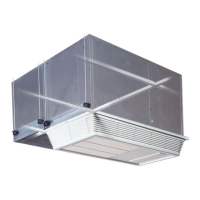
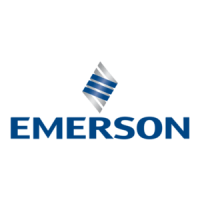

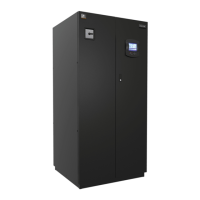
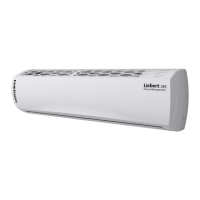
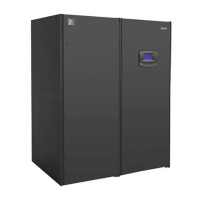

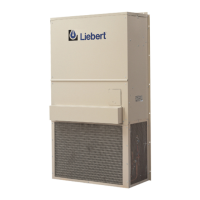
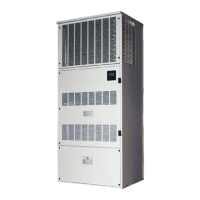

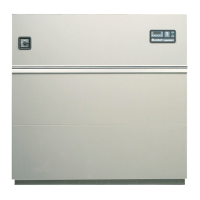
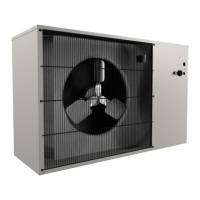
